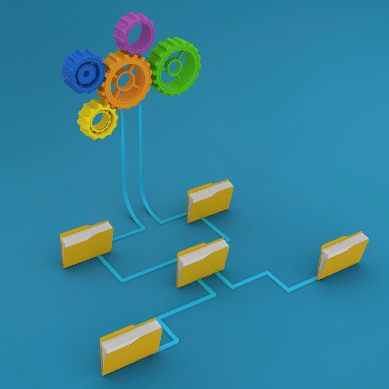Seven Risk Categories in Cyber Risk Management:
Understanding the different types of risk is crucial for devising comprehensive strategies for various types of risk management.
Seven categories of risk in cyber risk management include:
1. Internal Risk:
Internal risk encompasses potential threats and vulnerabilities originating from within the organization. These risks are tied to employees, internal processes, and technology. Employee actions, such as unintentional or intentional data breaches, unauthorized access, and insider threats, contribute to internal risk. Inadequate access controls and poor cyber hygiene practices further heighten internal risks.
- Mitigation strategies: implementing robust access controls, conducting regular employee training, monitoring user activities, and enforcing strong cybersecurity policies.
2. Third-Party Risk
Third-party risk involves potential threats from external entities. The actions of these external entities may impact the organization’s security. Factors to consider include supply chain risks and data sharing and handling practices.
- Mitigation strategies: conducting thorough vendor assessments, implementing contractual cybersecurity requirements, and monitoring third-party activities.
3. Compliance Risk
Compliance risk encompasses legal and regulatory compliance, adherence to industry-specific cybersecurity standards, and meeting data protection requirements. Risks also arise from inadequate reporting and disclosure of cybersecurity incidents.
- Mitigation strategies: establishing a robust compliance program, conducting regular audits, staying informed about regulatory changes, and implementing measures to address compliance gaps.
4. Reputational Risk
Reputational risk is associated with negative public perception, loss of trust among stakeholders, media and public relations impact, and potential financial losses.
- Mitigation strategies: developing a robust crisis communication plan, responding transparently to incidents, investing in proactive reputation management, and demonstrating a commitment to cybersecurity best practices.
5. Technology Risk
Technology risk encompasses potential threats and vulnerabilities associated with the organization’s technology infrastructure. This includes risks related to hardware failures, software vulnerabilities, network security, and the adoption of emerging technologies.
- Mitigation strategies: implementing robust cybersecurity measures, regular software patching, conducting vulnerability assessments, and staying informed about emerging technologies and associated risks.
6. Operational Risk:
Operational risk refers to the potential threats and vulnerabilities associated with the day-to-day activities and processes within an organization. Types of operational risk include human error, business process failures, and supply chain disruptions.
- Mitigation strategies include providing cybersecurity training to employees, implementing robust business continuity and incident response plans, and conducting regular risk assessments of operational processes.
7. Strategic Risk:
Strategic risk encompasses potential threats associated with the organization’s strategic decisions, goals, and long-term planning. This includes risks related to business strategy alignment, strategic partnerships, and innovation.
- Mitigation strategies involve integrating cybersecurity considerations into strategic planning, conducting thorough risk assessments for strategic initiatives, and establishing clear cybersecurity guidelines for partnerships.
Please login or Register to submit your answer





